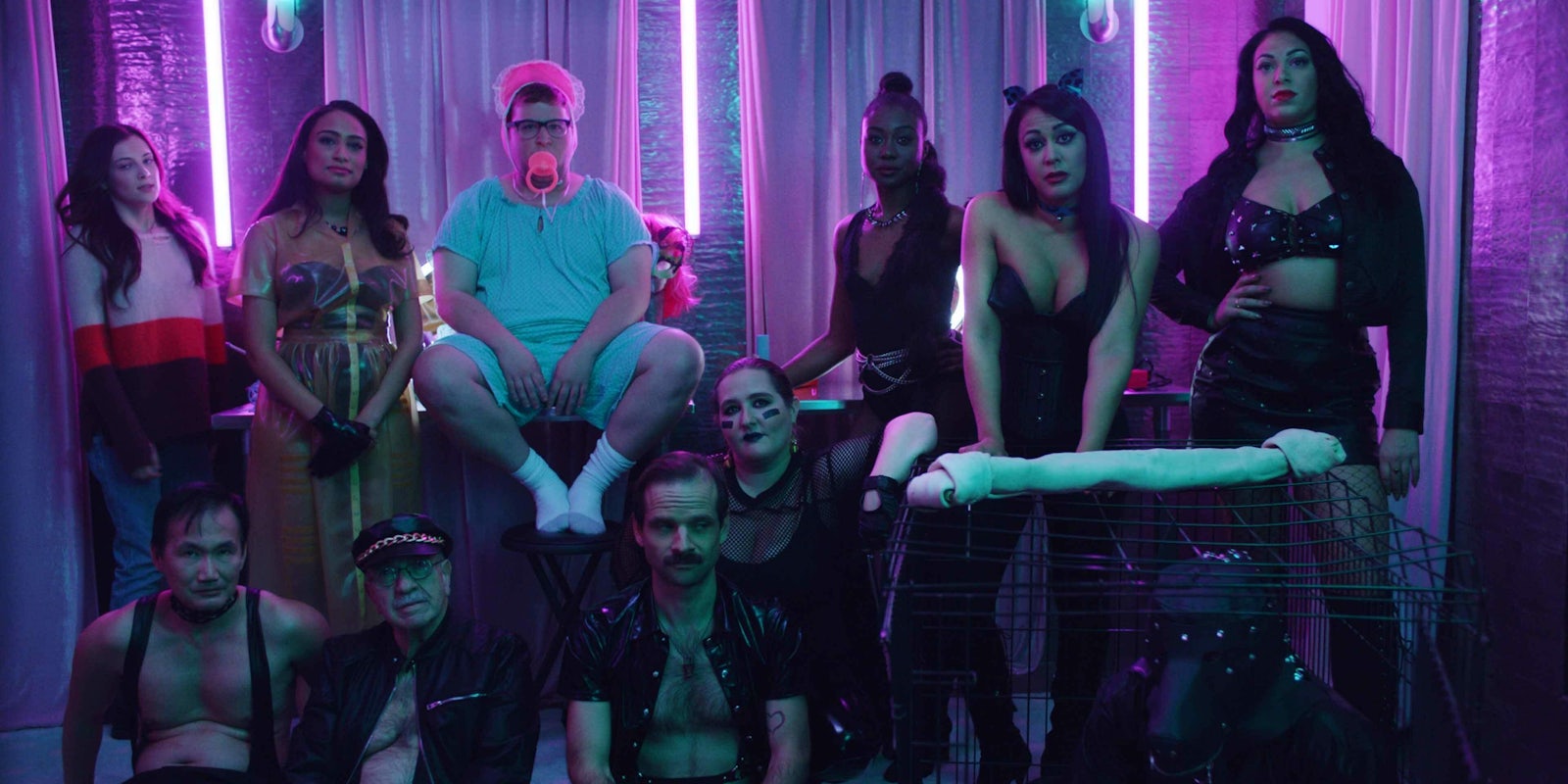In the new Netflix series Bonding, a New York City grad student moonlighting as a dominatrix hires her gay best friend to be her assistant and bodyguard. Pete, played by Brendan Scannell, reluctantly agrees to help out Mistress May (played by Zoe Levin) by driving her to appointments with clients, cleaning up the aftermath, and other assigned duties. As creator Rightor Doyle wrote in an Instagram post, the series is loosely based on his own experience as a young gay man working as an “assistant” to a dominatrix, which he said, “eventually freed me of many of my own sexual hangups.”
https://www.instagram.com/p/BwpcD61hBzR/
Though working closely with a dominatrix offered Doyle an eye-opening experience of queerness and femininity, Bonding carries many hangups of its own, as well as a fundamental misunderstanding of what dominatrixes actually do. Some members of the dominatrix community took to Twitter to point out the technical aspects of dominatrix work the show misrepresents, like proper rope technique and typical work wear. The opening scene of the pilot episode follows Pete as he steps into what appears to be an abandoned building repurposed as a dungeon, where a masked dominatrix grabs his hand without permission and silently leads him down a hallway, passing leather-clad men in the middle of a role-play scene.
https://twitter.com/korbellacroix/status/1121633380502630401
This visual introduction to the world of BDSM certainly makes for a sexy opening to a pilot episode, but as a former freelance submissive, I’m not entirely convinced the writers on the show have actually ever set foot inside a BDSM dungeon. Like most above-ground businesses, dungeons typically offer a well-lit reception area where an employee greets visitors and checks them in for their scheduled booking or walk-in appointment. They don’t typically require secret passwords because most businesses like to make money.
Bonding takes plenty of artistic license in creating an overly salacious narrative, and some members of the BDSM community believe its depictions of consent—or lack thereof—are profoundly inaccurate. “In a social climate where the conversation around consent is so prevalent, as it should be, I found many of Bonding‘s scenes to be in poor taste,” Lacey Louix, a fin/fem domme, cam model, and confidant, told me. “This would be less problematic if it weren’t for the fact that many people look to these mainstream depictions of BDSM as reference material, not really knowing any better. Many lack proper training and often don’t understand the risks associated with some of the activities they may choose to participate in. Kink can be incredibly freeing, expressive, and fun, but consent and safety are no joke either.”
The series also drew criticism from sex workers who said the show offers a narrow, reductive, and stigmatized representation of their work, not to mention a supremely unoriginal premise: a white sex worker dom-ing her way through grad school. People turn to sex work for a variety of reasons, and sometimes that includes paying college tuition, but “stripping through college” and other related clichés are tired at best. At worst, this premise and others like it suggest that sex work is only valid or acceptable when used as a temporary stepping stone, or a brief stop on the way to a “real” career.
Portraying a white woman’s brief foray into pro-domming as a fun adventure, while choosing to skip over the reality of sex work stigma, undermines the validity of their work and the threats to sex workers’ safety and well-being under the anti-trafficking law FOSTA-SESTA. “FOSTA/SESTA is literally killing people,” Megara Furie tweeted. “And here you are, @netflix, hand out, collecting cash while workers are jailed, evicted, killed. Shame on you.”
https://twitter.com/MegaraFurie/status/1121376269411729408?
Kate D’Adamo, a sex worker advocate with Reframe Health and Justice, told me this type of narrow representation also reveals a dangerous disregard for sex workers’ basic humanity. “When every sex worker you see in media is either in handcuffs or a body bag, you internalize that and you stop expecting more. You don’t employ harm reduction techniques, because you don’t know it’s even a possibility,” D’Adamo said. “It also shapes how people treat you—either with suspicion, fascination, or abject fear—but never with humanity, because sex workers are rarely shown as human.”
For D’Adamo, the key to respectful, affirming, and humanizing media representation is simple: talk to sex workers. In a recent Twitter thread, D’Adamo asked her followers to share their favorite fictionalized representations of sex workers, and many responses mentioned the Hulu series Harlots and HBO’s The Deuce. “The best sex worker representation is what resonates with sex workers, and the people in your lives who trade sex,” D’Adamo said. “If you’re keen on consuming media about those folks, find those people in your world and ask how it feels. If it hurts them, stop and ask for what does resonate.”
#sexworktwitter? What’s your favorite representation of sex workers/sex work in fictional media?
— Kate (@KateDAdamo) April 26, 2019
Getting sex work right doesn’t mean fudging the details for views or skimping on the fact-finding because you think no one will notice. It means seeking out those marginalized voices and listening to sex workers when they tell their own stories. It isn’t complicated; it’s about compassion.
READ MORE:


